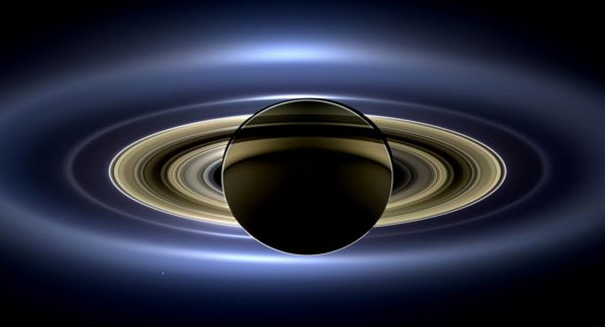
The Cassini spacecraft, flown by NASA engineers in Pasadena, California, has just made an extremely close fly-by with one of Saturn's strangest moons, Dione.
NASA’s Cassini spacecraft just made an extremely close pass with one of Saturn’s most mysterious moons, Dione. According to Clarkesville Online, the pilotless ship flew by Dione at 1:12 pm PDT on June 16, coming within just 321 miles of the moon.
As Cassini flew by the moon, its cameras and spectrometers collected data about a region called “Eurotas Chasmata,” which was first observed 35 years ago by NASA’s Voyager. Back then, the region appeared only as bright, wispy streaks of light. Scientists at the time guessed that they might have been bright material pushed to the surface from the moon’s inner geology, like an ice volcano.
Cassini’s recent pass debunked that theory, however. The bright streaks appeared to be a complicated network of canyons with brilliantly bright walls, which are called linea.
Cassini will try to determine the makeup of any small particles emanating from Dione, the presence of which would indicate small0scale geologic activity on the mysterious moon. Mission controllers in Pasadena, California expect to begin seeing more images from Cassini’s flight over the next few days.
This pass was Cassini’s fourth planned flyby of the strange moon. This targeted encounter required the use of a propulsion maneuver that allowed engineers to steer the craft right towards the moon.
In 2011, Cassini flew just 60 miles over the surface of the moon, and will fly past Dione one last time on August 17th of this year.
Cassini will say its goodbyes to Dione at the end of 2015, when it will turn its sights to explore the space in between Saturn and its strange rings.